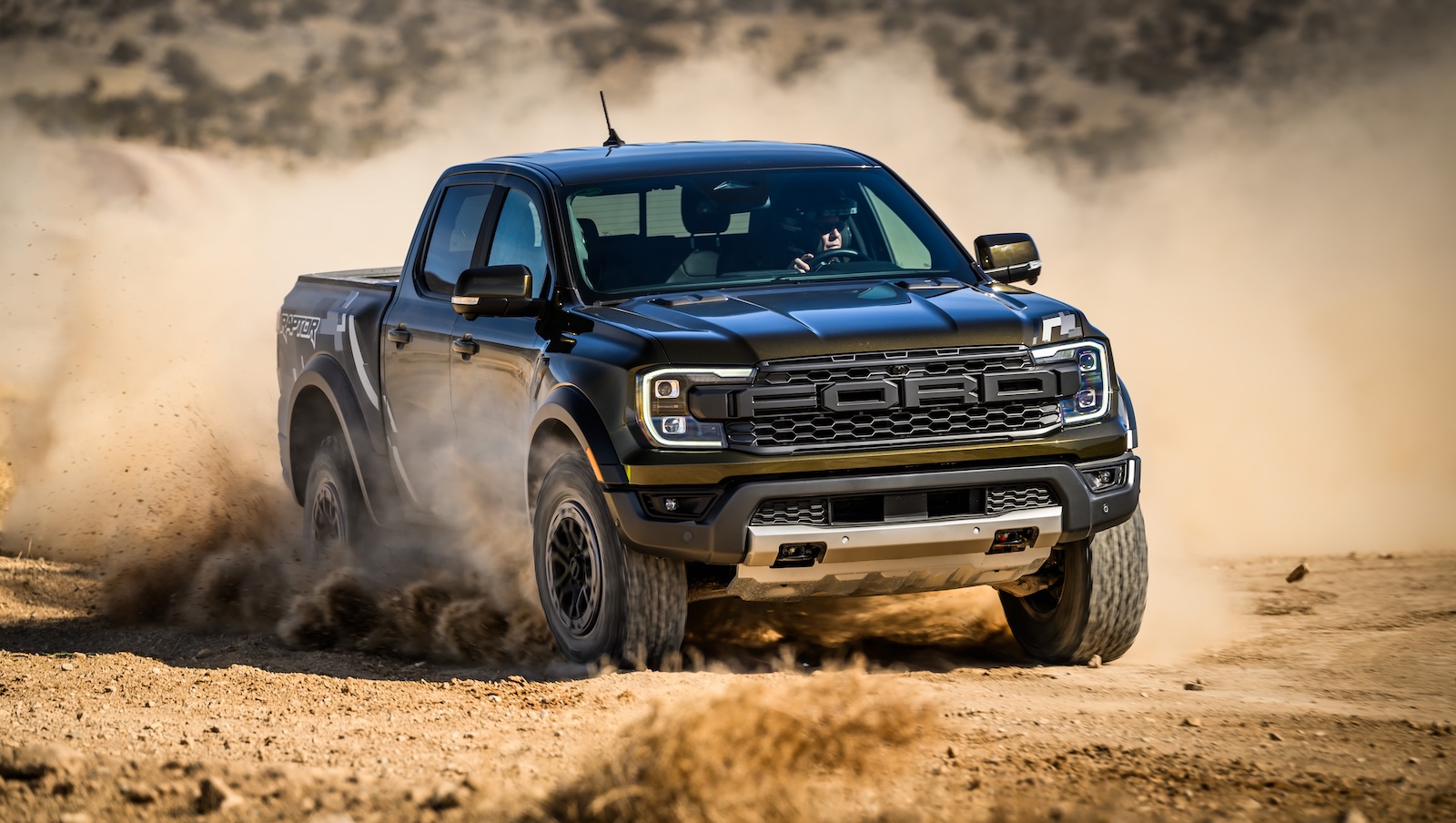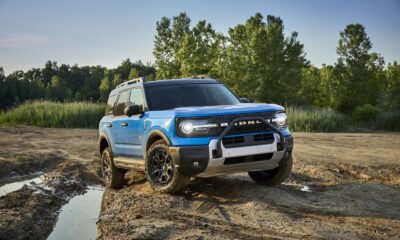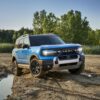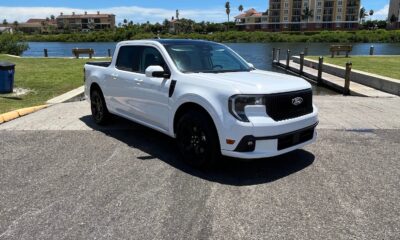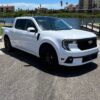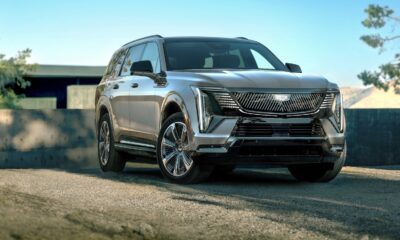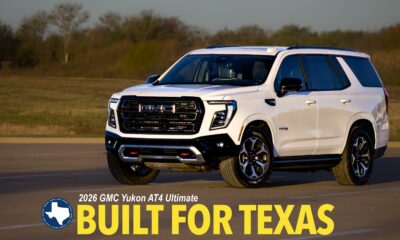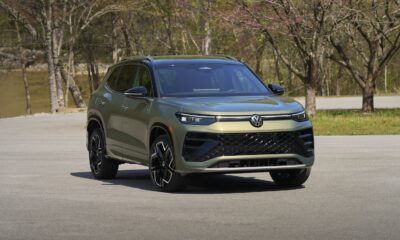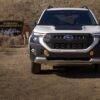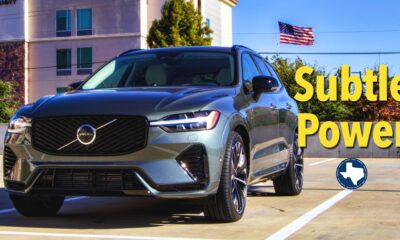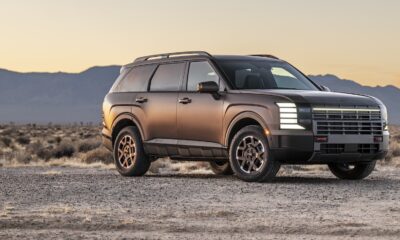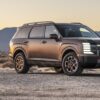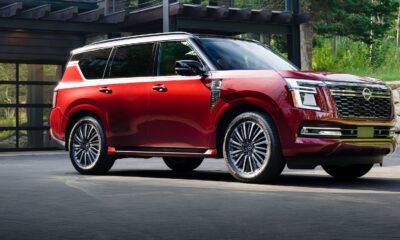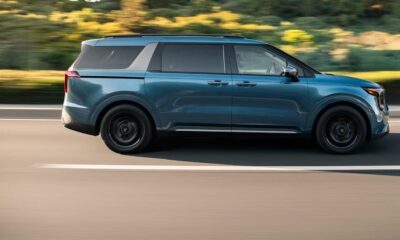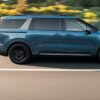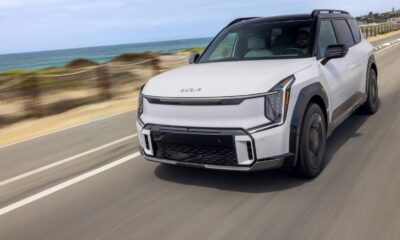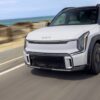Car Reviews
Ford’s Ranger Raptor – RANGING FAR AND WIDE
Ford’s Ranger Raptor
RANGING FAR AND WIDE
SPIRIT ROCK, Ark — Tall and beefy, the Ford Ranger Raptor felt like it might be top-heavy. Then the highway unfurled like ribbon, and it didn’t lean — it lunged. What followed felt less like a pickup and more like a grand tourer with a taste for altitude.
Let’s get this out of the way up front: the tree-hugging tightwad in me sees no sense in a $60,050 pickup that gulps gas like a kid at a candy buffet, but when I pointed it at the mountain and climbed, it danced down the highway and scrambled across on the rocks. No wonder Ranger is one of the fastest-selling trucks on the planet.
Ford’s Raptor badge has always meant one thing: a truck engineered to run flat-out where the pavement ends. Until now, that meant full-size F-150s, though Ranger Raptors have prowled overseas. For 2025, the Ranger Raptor finally lands in U.S. showrooms — not to play catch-up, but to set the pace.
From the first glance, its intent is obvious. Flared fenders, functional hood vents and the “FORD” block-letter grille aren’t just styling cues; they’re part of a package built to survive high-speed desert runs and technical rock crawls. The engineering beneath the skin makes this Raptor more than a dressed-up Ranger.
Powertrain and performance
At its heart is a 3.0-liter twin-turbo EcoBoost V6 tuned for a class-leading punch. Twist to Baja Mode and an extra wastegate opens in the exhaust. Lean into the throttle and the melodious roar stirs feelings I haven’t felt since my first date’s hand met mine — electric, unforgettable.
Paired with a 10-speed automatic transmission, the engine provides a surplus of power for merging, passing, or blasting over dunes. The gearbox is terrain-smart: crisp, quick shifts in Baja Mode; smooth, unobtrusive changes in Normal. Paddle shifters are there, but why bother? The transmission’s logic, fed by a half-dozen sensors, matches revs faster and more precisely than any human. Just hang on and aim.
Four-wheel drive is standard, with an advanced transfer case and modes that tailor throttle, shifts, and traction control from wet pavement to deep sand.
The EPA rates the Raptor at 16 mpg city, 18 highway, with annual fuel costs about $1,200 above average. Test trucks arrive full, but once I was buying my own, I kept finding excuses to “do research” in the Ouachitas. Feathering the throttle, I coaxed 18.5 mpg over 500 miles of high adventure.
Off-road chops, Raptor-only muscle
This is where the truck earns its name. Suspension is built around Fox 2.5-inch Live Valve internal-bypass shocks, adjusting damping in real time. On washboard trails, they iron out chatter; on big hits, they stiffen instantly to keep you off the bump stops. Long-travel geometry, reinforced frame sections and unique control arms allow more articulation and greater stability over uneven ground.
Baja Mode sharpens throttle, relaxes traction control, and optimizes shifts for sustained high-speed runs — straight from Ford’s Baja 1000 playbook. Trail Control acts like a low-speed cruise control for technical climbs or descents, letting you steer while the truck manages throttle and braking.
Front and rear locking differentials — rare in this class — give true go-anywhere traction, whether clawing up loose rock or powering through deep sand. Add 33-inch BFGoodrich KO2 all-terrains, full-coverage skid plates, and an elevated air intake, and you’ve got a truck that keeps moving when others bog down.
The payoff for drivers: the confidence to carry speed across rough terrain without punishing the cabin, tackle obstacles without drama, and explore beyond the graded road knowing every system is working to keep you moving forward – and, notably, returning you home.
On road, civilized between trails
The real surprise? How all that desert-race hardware melts into the background on asphalt. Adaptive Fox shocks smooth potholes and expansion joints, keeping the cabin composed even in daily traffic. Long-travel suspension resists excessive body roll, so highway lane changes feel secure, not sloppy.
In Normal mode the 10-speed shifts invisibly, and the twin-turbo V6 delivers effortless passing power without constant downshifts. Steering is precise for a truck this size, with enough weight to inspire confidence at speed. Wind and road noise are well-managed thanks to extra insulation and the KO2s’ surprisingly quiet tread.
Inside, bolstered sport seats hold you in place off-road yet stay comfortable on long hauls. The infotainment system responds quickly, and driver-assist tech like adaptive cruise and lane-keeping aid reduce fatigue. This is a truck that can hammer across a desert wash in the morning, then settle into a refined rhythm on the way home — no trailer required.
Interior and technology
The cabin blends Ranger practicality with Raptor-specific touches: a large vertical touchscreen running Ford’s latest SYNC, wireless Apple CarPlay/Android Auto, and a fully digital cluster with off-road data screens. Materials feel ready for mud but look ready for date night, with available leather-trimmed seats and contrast stitching.
Storage is generous — deep door pockets, a big center bin, and under-the-seat compartments in back. The crew cab offers adult-friendly rear legroom, making the Raptor viable for both family duty and weekend adventures.
Towing and payload
While tuned for off-road performance rather than max hauling, it still tows up to 5,510 pounds and carries 1,411 pounds of payload — enough for a pair of ATVs, a small camper, or a weekend’s gear without overtaxing the chassis.
Bottom line
Ford’s Ranger Raptor isn’t trying to be all things to all people. It’s unapologetically built for those who want a midsize pickup that can run hard off-road, cruise comfortably on-road, and look the part doing both. It blends Baja-ready hardware with daily-driver civility, making it the apex predator of midsize pickups — fast, fearless, and built to roam.
2025 midsize off-road pickup comparison
*MSRP excludes destination charges.
**EPA estimates; real-world mileage varies with terrain and driving style.
How They Stack Up
- Ford Ranger Raptor – The horsepower leader in the midsize off-road class, with suspension tech that makes it as composed on washboard trails as on the interstate.
- Toyota Tacoma TRD Pro – Hybrid torque and Toyota’s durability reputation make it a long-term bet, but it can’t match the Raptor’s joie de vivre.
- Chevrolet Colorado ZR2 – Balanced ride and strong towing credentials, though its cabin tech and finish trail Ford’s.
- Jeep Gladiator Rubicon – Unmatched open-air fun and rock-crawling chops, but less refined on pavement and lighter on payload.
- Full-Size Context: Ford F-150 Raptor – Extreme capability and space, at a price and size that push it into a different league.
Value Verdicts
- Ford Ranger Raptor – Ideal for those seeking top midsize power and advanced suspension, prioritizing capability over fuel efficiency.
- Toyota Tacoma TRD Pro – Ideal for those prioritizing long-term durability, hybrid efficiency, and strong resale over outright speed.
- Chevrolet Colorado ZR2 – Suits drivers who need balanced on-/off-road manners and towing strength, and can live without the latest cabin tech.
- Jeep Gladiator Rubicon – Appeals to off-road purists and open-air adventurers who accept on-road compromises for trail dominance.
Full-Size Context: Ford F-150 Raptor – For buyers who want extreme performance and space, and have the budget and parking room to match.



